Why Is the Devastated City of Famagusta Off-Limits?
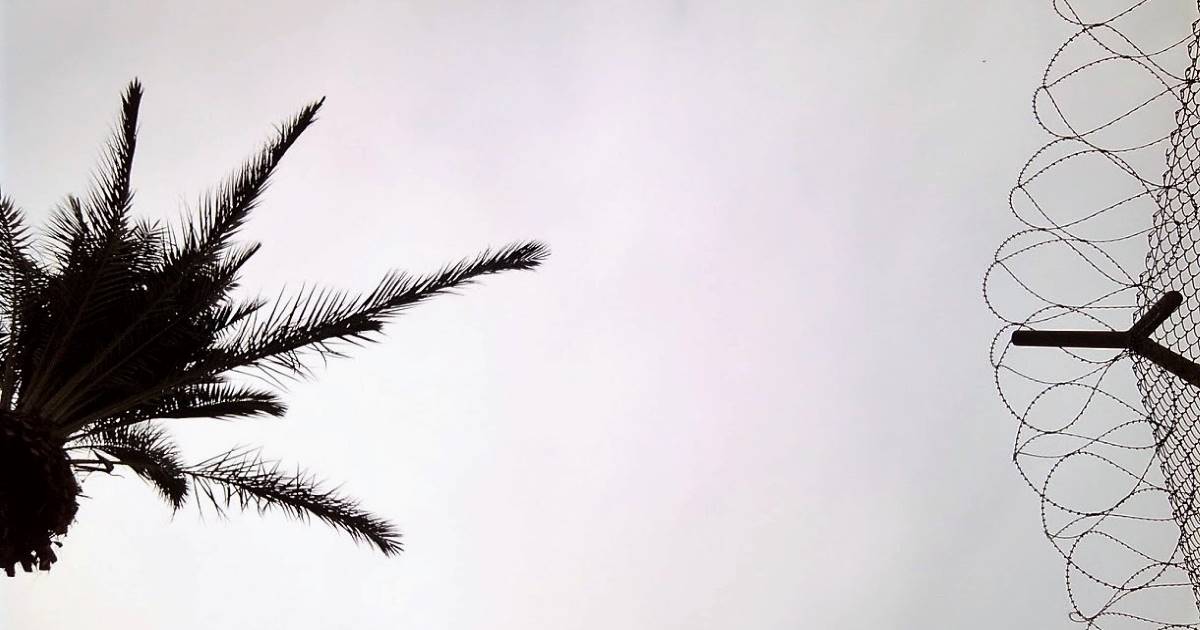
Famagusta is a city on the east coast of Cyprus. Visiting the city of Famagusta isn’t off-limits. However, Famagusta has a suburb called Varosha. You cannot enter Varosha, the forbidden city of Cyprus.
Getting to Famagusta
Famagusta/Ammochostos is a popular day-trip destination among the beach crowd of Agia Napa and Protaras. It is only 20 km, but unfortunately, you cannot just take a bus or run a half-marathon from the resort towns to Famagusta.
The city falls within the Turkish Republic of Northern Cyprus. If you want to get there from the southern part of Cyprus, you must cross the Green Line into Northern Cyprus.
If you drive, you either have to cross the border in Nicosia and return to the coast, or you have to use the crossing at a town called Strovilia, inside a British military base.
It is also possible to take an organized trip to Famagusta.
Stronghold to Ghost Town
Famagusta is historically a major port city due to its natural harbor.
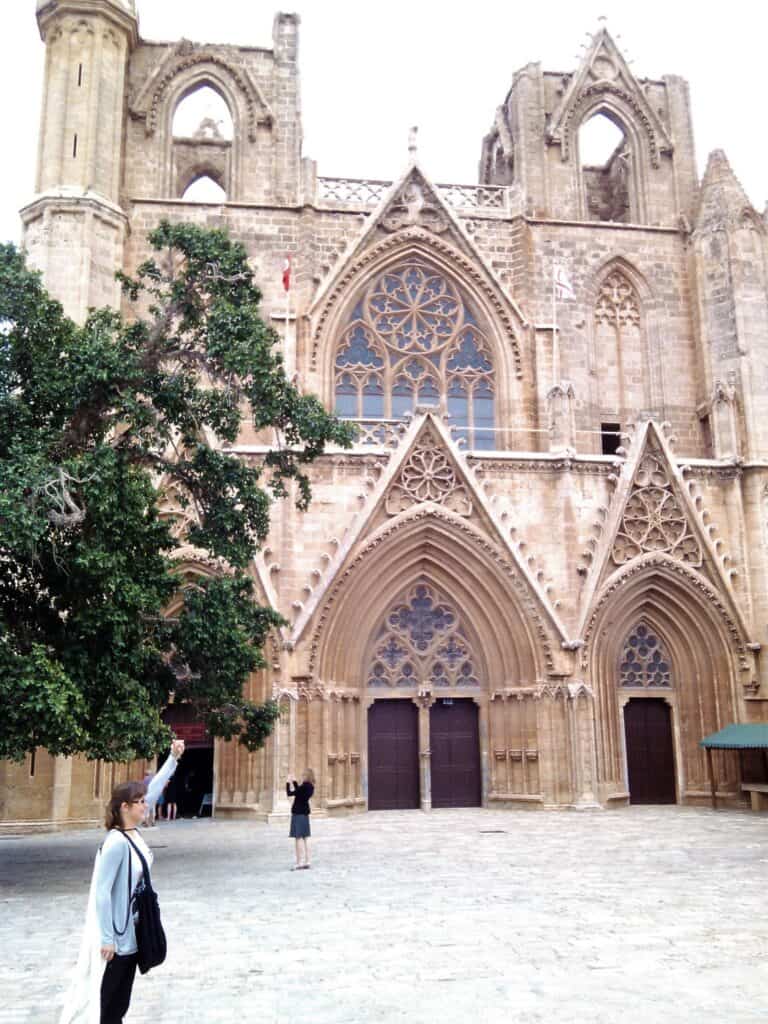
In the middle ages, it was the stronghold of the Venetian merchants in the eastern Mediterranean. The traders built the Cathedral St. Nicolas, among other churches, to show off their wealth.
With the advent of the Ottoman rule (16th century), Christians lost their privileged status in Famagusta.
In the walled city, the Muslim population repurposed some buildings: they converted the Cathedral of St. Nicholas into a mosque (now known as the Lala Mustafa Pasha Mosque).
They also developed a bazaar and public baths.
In the late 19th century, the British Empire took over, and the port started expanding once again. In World War I, Famagusta was a military base for the British Army.
The city grew, and the development centered in an area called Varosha. By the middle of the 20th century, Varosha became a luxurious tourist center. Famous people like Brigitte Bardot and Elizabeth Taylor visited here and were hanging out in the golden sand.
How did this resort of Varosha become a no man’s land? Why is Famagusta off-limits?
Bloody conflicts
Ethnic conflicts between the Greeks and the Turks had already appeared at that time. In 1955, an organization of Greek nationalists began a war of independence against the British. It resulted in the foundation of a single republic in Cyprus. In the leadership, Greeks and Turks were represented according to their ethnic proportions.
Subsequently, the President of the country, Archbishop Makarios, made amendments to the Constitution of Cyprus, which sank the Turks into minority status. A tense domestic political situation arose, with ethnic unrest erupting in mixed populations in Cyprus. It resulted in UN peacekeepers invading the island in 1964. The so-called “green line” between Greek and Turkish territories was created.
1974
Despite peacekeepers, in 1974, Greek nationalists carried out a coup against Makarios. Bloody conflicts erupted in Turkish-majority areas, so the Turkish army – in defense of the Muslim minority – launched its operation a few days later. Chaos broke out on the island, and the Greeks and Turks alike began ethnic cleansing. Turkish troops soon took control of 37% of the island, essentially marking the “green line” that passed through Cyprus, and in 1975 proclaimed the Turkish Republic of Northern Cyprus. The sovereignty of Northern Cyprus is not recognized by any country of the world other than the Ankara government. Its population is almost entirely Muslim and belongs to the Turkish ethnic group.
During the invasion of 1974, Famagusta was bombed by Turkish aircraft. As a result of the airstrikes, dozens of civilians died, including tourists.
It took two days for the Turkish Army to occupy the city. The entire Greek Cypriot population of Famagusta fled. Some of them mysteriously disappeared, and up to this day, no one knows anything about them.
Why is Famagusta Forbidden?
The Turkish Army fenced off the Varosha suburb of Famagusta, and it has remained enclosed ever since. The Greek Cypriots who had fled from Varosha could not return.
The evolution of the city stalled, and it became a depopulated ghost town. Currently, military forces are stationed here, and no one is allowed to enter its territory, nor Greeks or Turks, or any other civilians.
You can take a look at the long golden sandy beach from outside of the fence. The once magnificent buildings, luxury hotels, schools, and churches are now empty, looted and crumbling. The eerie atmosphere of this no man`s land will send chills down your spine, no matter how hot the weather is on this Mediterranean island.
In the first photo, I am standing on the verge of the beach, in front of the fence.
The second photo has a larger angle. In the background, there is a long stretch of beach with numerous hotels. The quality is not very good because entry and photography are off-limit beyond the fence.

Famagusta ghost town 
The eerie beach of Famagusta

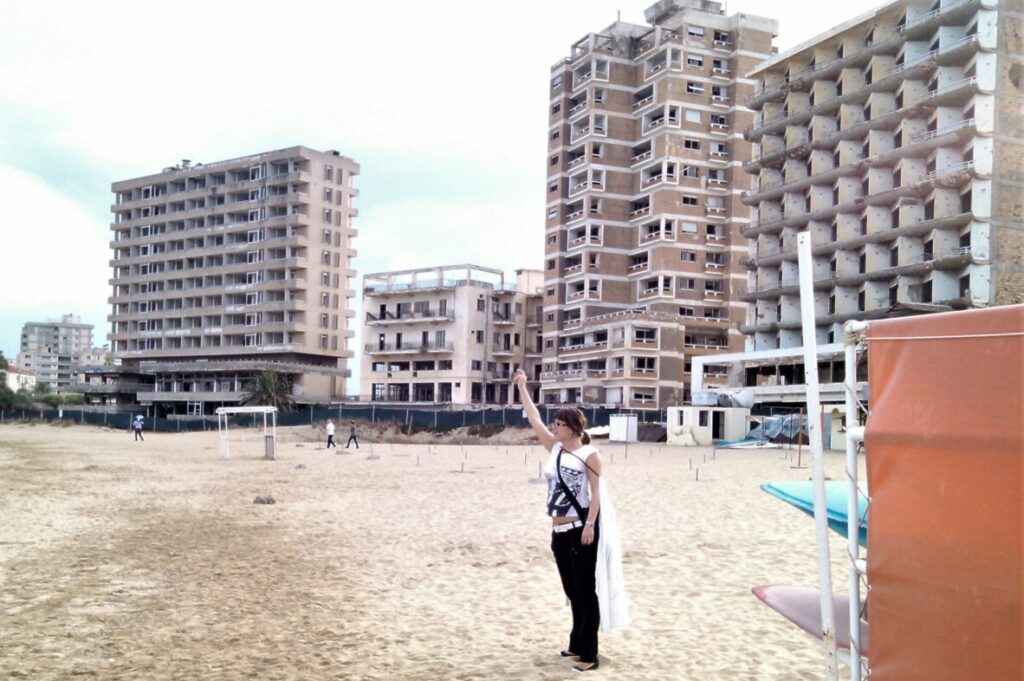
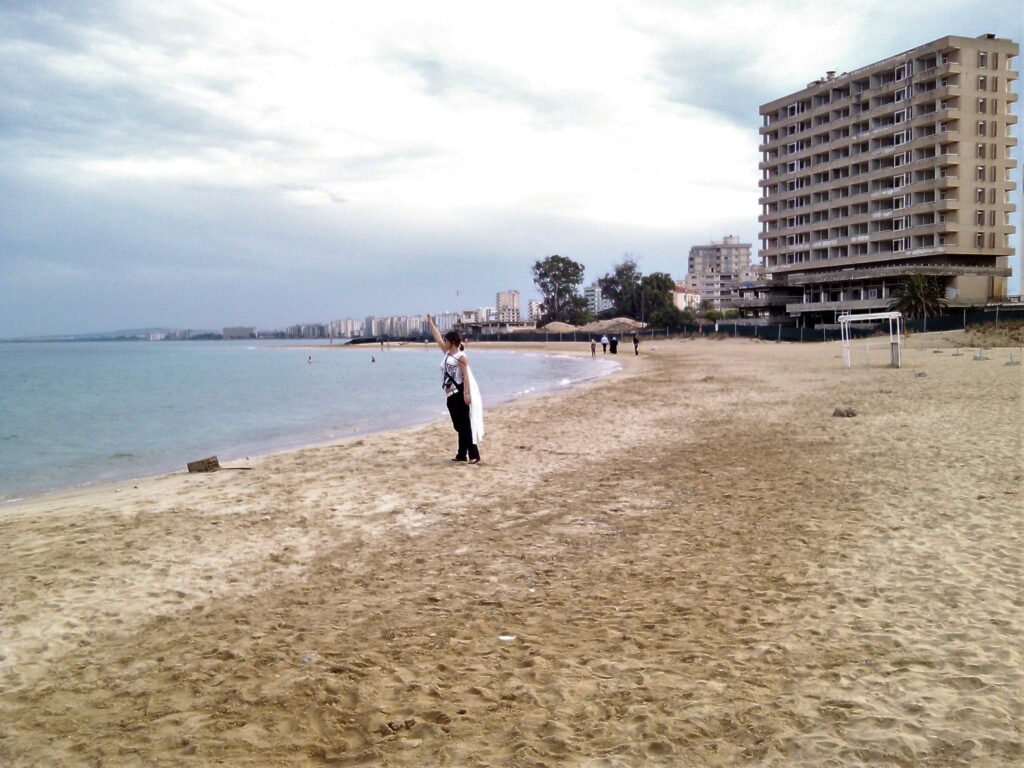

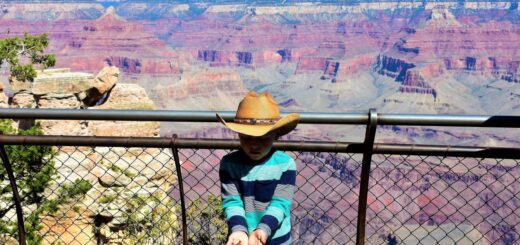


Wow! Had never heard of this place before and it’s quite fascinating to hear that you went to visit such a mysterious town. That sounds like an adventure
Very interesting. I have been wanting to visit Cyprus and know that they have had political tensions between the Greeks and Turks, but didn’t know these details. Loved learning the history.
Wow, I had never heard of Famagusta before, and I honestly know very little about the history of this region. Interesting read.
That’s incredible I Swam of the beach from the old Grecian hotel on the beach front Xmas 59 years ago whilst on holiday with my parents
I remember going to the old town guarded by one Turkish old soldier and having to show our uk passport to go into old town through a old arch
Turkish taxes could bring us out no Greek taxi could go in trouble even then
Wow, 59 years ago must have been amidst the beginning of the chaos. And the water must have been cold around Christmas
Too bad religion had to make this place off limits to everyone, but it might be more about money and who gets to cash in. Sad nevertheless.
“The man who prays is the one who thinks that god has arranged matters all wrong, but who also thinks that he can instruct god how to put them right.”
– Christopher Hitchens.
Read ‘The Sunrise’ by Victoria Hislop.
Hello Andrew, thank you for the recommendation, I put it on my wishlist
Just read the book. Couldn’t put it down. Such an insight into the Cyprus conflict and a moving story of the lives of the people from Famagusta.
I feel I must read it now
Reading it now. Such a sad story. Pretty much shows that people can be at their worst no matter where they are, no matter what religion or ethnic background. Pride/power at the top of the political chain always comes before the fall/war—and undermines any chance for peace/unification. Will never learn.
Great book about Famagusta by Victoria Hislop
The book is amazing, I had never heard of the place before… what a waste.
Just visited varosha as some of it is now open to the public very eeary definitely worth a visit but definitely wait until cooler months. Swimming in the sea on Christmas day is amazing as the weather here is amazing
Yes, Cyprus is really hot during the summer months. As the locals and expats keep saying, in August it feels like someone is constantly blowing a hair dryer into your face
Thanks for this info and article!! We visited this year, now that it is open. Very interesting and highly recommended to visit.
Oh, good to know.
I can remember in 1974, my dads close friend was killed during the troubles, he was English and worked for the British Govt. I was about 15 yes old at the time and can remember the shock of his death. My dad had worked abroad for the govt several times, but we were in the Uk when this happened. Dads friend had been killed and put down a well. Many Years later, when on holiday in Cyprus, I went to see the ghost town, you could only see it then, at the border between the north and south and it was very eerie and sad and somewhere I will never forget.
This story is terrifying and sorrowful. I’m sorry